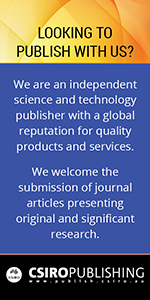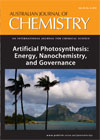
Australian Journal of Chemistry
Volume 65 Number 6 2012
RESEARCH FRONT: Artificial Photosynthesis: Energy, Nanochemistry, and Governance
CH12193Towards Global Artificial Photosynthesis (Global Solar Fuels): Energy, Nanochemistry, and Governance

This introduction sets the papers collected for this special edition (that arose from the 2011 Lord Howe Island conference on Global Artificial Photosynthesis) in the context of the scientific and governance challenges for a Global Solar Fuels project. This special edition represents the first dedicated to such a theme and its significance is highlighted by the fact that 2012 is the United Nations’ Year of Sustainable Energy for All.
CH12114Molecular Chemistry for Solar Fuels: From Natural to Artificial Photosynthesis
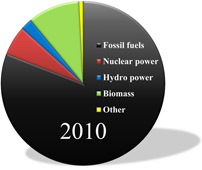
Our present energy system stands on black roots; one decade into the new century fossil fuel sources are still more than 80 % of our primary energy. This paper discusses why we need to develop means to produce truly sustainable fuels, and proposes solar energy as the major renewable energy source to feed from.
CH12114 Abstract | CH12114 Full Text | CH12114PDF (629 KB) Open Access Article
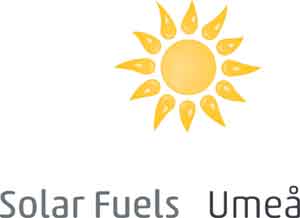
Using the example of solar fuels research at the Chemistry Biology Centre (KBC) at Umeå University, Sweden, an institutional approach is described to promote interdisciplinary research by breaking down traditional departmental borders.
CH12020 Abstract | CH12020 Full Text | CH12020PDF (219 KB) Open Access Article
CH12048Towards Hydrogen Energy: Progress on Catalysts for Water Splitting
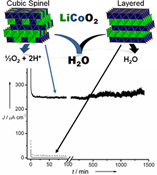
This article reviews some of the recent work in the field of water oxidation and reduction catalysts by fellows and associates of the Australian Research Council’s Centre of Excellence for Electromaterials Science (ACES) at Monash University and the University of Wollongong, as well as their collaborators. This work is focussed on the development of a hydrogen-based energy technology. Topics discussed include: (1) the role and apparent relevance of the cubane structure of the Photosystem II - Water Oxidation Complex (PSII-WOC) in non-biological homogeneous and heterogeneous water oxidation catalysts, (2) light-activated conducting polymer catalysts for both water oxidation and reduction, and (3) porphyrin-based light harvesters and catalysts.
CH12048 Abstract | CH12048 Full Text | CH12048PDF (551 KB) Open Access Article
CH12022Structure, Dynamics, and Function in the Major Light-Harvesting Complex of Photosystem II
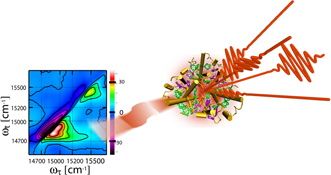
In natural light-harvesting systems, pigment-protein complexes (PPC) convert sunlight to chemical energy with near unity quantum efficiency. Studies using two-dimensional electronic spectroscopy (2DES) provide an incisive tool to probe the electronic, energetic, and spatial landscapes that enable the efficiency observed in photosynthetic light-harvesting. We review design principles of PPCs learned from the information contained within 2D spectra.
CH12022 Abstract | CH12022 Full Text | CH12022PDF (1 MB) Open Access Article
CH12105The Chemical Problem of Energy Change: Multi-Electron Processes

Feedback mechanisms originating from autocatalytic events near the end of an electron transfer chain can improve the rate of electron transfer nearer to the beginning, leading to cooperative multi-electron transfer.
CH12105 Abstract | CH12105 Full Text | CH12105PDF (416 KB) Open Access Article
CH11476 The Biomimetic Inspiration for Renewable Hydrogen Fuel Production from Water Oxidation within Artificial Photosynthesis
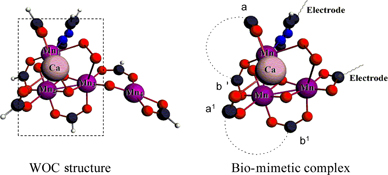
The Mn4/Ca centre in Photosystem II is the most effective anodic water oxidizing catalyst known and operates close to the thermodynamic limit. This performance derives from redox properties of Mn in the oxidation states II–IV, which are uniquely ‘tuned’ to allow function with minimum overvoltage. Possible strategies to exploit this for efficient, biomimetic electrolytic H2 generation are discussed.
CH11476 Abstract | CH11476 Full Text | CH11476PDF (1.2 MB) Open Access Article
CH12016Preparation and Characterization of Catalysts for Clean Energy: A Challenge for X-rays and Electrons
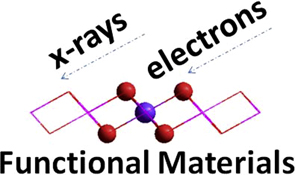
Key to elucidating the origin of catalytic activity and improving catalyst design is determining molecular-level structure, in both the ‘resting state’ and in the functioning ‘active state’ of the catalysts. Herein, we explore some of the analytical challenges important for designing and studying new catalytic materials for making and using hydrogen.
CH12016 Abstract | CH12016 Full Text | CH12016PDF (870 KB) Open Access Article
CH11455 Active Site Elucidation in Heterogeneous Catalysis via In Situ X-Ray Spectroscopies
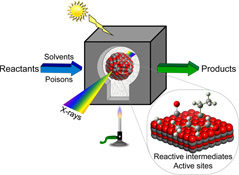
Despite their importance in energy and chemical technologies, heterogeneous catalysts are often viewed as a ‘black box’, with their design bordering on alchemy. Advanced in situ X-ray spectroscopies are now enabling scientists to peer inside these functional nanomaterials and understand the inner workings of catalysts in action.
CH11455 Abstract | CH11455 Full Text | CH11455PDF (1.9 MB) Open Access Article
CH11451Molecular Metal Oxide Cluster-Surface Modified Titanium(IV) Dioxide Photocatalysts
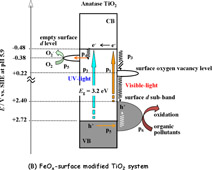
Surface modification of TiO2 with molecular metal oxide clusters is demonstrated to be a promising approach for providing it with visible-light responsiveness or enhancing the UV response.
CH11451 Abstract | CH11451 Full Text | CH11451PDF (1018 KB) Open Access Article
CH11453Enhanced Water Splitting on Thin-film Hematite Photoanodes Functionalized with Lithographically Fabricated Au Nanoparticles
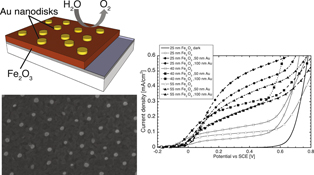
Lithographically fabricated Au nanoparticles enhance the photocurrent of thin-film hematite (α- Fe2O3) photoanodes in a photoelectrochemical cell for water splitting.
CH11453 Abstract | CH11453 Full Text | CH11453PDF (657 KB) | CH11453Supplementary Material (184 KB) Open Access Article
CH12024 On the Stability of Water Oxidation Catalysts: Challenges and Prospects
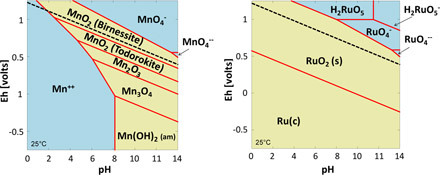
Future requirements for water splitting technologies need highly efficient water oxidation catalysts that are sufficiently stable for operation over many years. In this paper, we discuss some of the chemical and thermodynamic challenges confronting this goal, as well as some of the strategies that are available to overcome them.
CH12024 Abstract | CH12024 Full Text | CH12024PDF (316 KB) Open Access Article
CH12096Perspectives for Photobiology in Molecular Solar Fuels
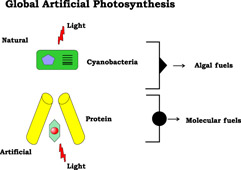
Solar fuels are initiatives to harness sunlight and to generate storable fuels. Microbes can be genetically reprogrammed to produce algal fuels in the form of hydrocarbons and biodiesel. Artificial photosynthesis using proteins can also be produced. The goal with these systems is to use renewable solar energy and to catalyse energy conversion into a chemical bond. The paper outlines options and possible outcomes with solar energy conversion using photobiology.
CH12096 Abstract | CH12096 Full Text | CH12096PDF (578 KB) Open Access Article
CH11452Engineering Enzymes for Energy Production
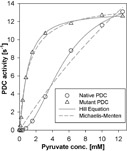
Enzymes allow efficient conversion of biomass into useful chemical energy; however, they are seldom optimized for reaction conditions in biotechnology. Directed molecular evolution can be used to generate enzymes suited for new environments. As an example, we illustrate how yeast pyruvate decarboxylase 1 has been enhanced for in vitro fermentative glycolysis.
CH11452 Abstract | CH11452 Full Text | CH11452PDF (241 KB) Open Access Article
CH11437The Challenge of Storage in the Hydrogen Energy Cycle: Nanostructured Hydrides as a Potential Solution
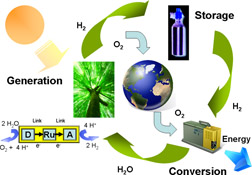
Nanochemical design methods offer routes to overcome the thermodynamic and kinetic hurdles associated with solid state storage in hydrides. In this review we discuss strategies of nanosizing, nanoconfinement, morphological/dimensional control, and application of nanoadditives on the hydrogen storage performance of metal hydrides and the potential role of such materials in a sustainable hydrogen cycle.
CH11437 Abstract | CH11437 Full Text | CH11437PDF (2.2 MB) Open Access Article
CH12077A New Quinoxalinyl-Substituted Nitronyl Nitroxide Radical and its Five-Spin CuII and Four-Spin MnII Complexes: Syntheses, Crystal Structures, and Magnetic Properties
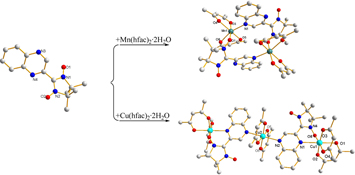
A new radical of 2-(2-quinoxalinyl)-4,4,5,5-tetramethyl-imidazoline-1-oxyl-3-oxide was first designed and synthesised to afford four coordination sites to construct CuII and MnII complexes with more complicated structures and magnetic properties.
CH12168Novel Phosphopeptides as Surface-Active Agents in Iron Nanoparticle Synthesis
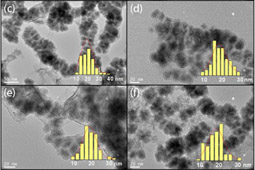
Wet chemical techniques are attractive methods for the preparation of metal nanoparticles. Here, we report the dramatic effect of rationally-designed phosphopeptides on the size, shape and magnetic properties of iron-iron oxide core-shell nanoparticles prepared in a one-pot synthesis by sodium borohydride reduction of an iron salt. These phosphopeptides are effective at small ratios of peptide to metal, in contrast to the behaviour of conventional surfactants, which must be added at high concentration to control the particle growth.
CH12039Bisiminopropadienes R-N=C=C=C=N-R from Pyridopyrimidines
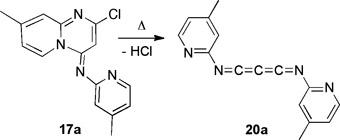
Chlorination of N,N′-di(2-pyridyl)malonamides affords 4-pyridylimino-4H-pyrido[1,2-a]pyrimidines 17. Flash vacuum thermolysis of 17a causes ring opening to a valence-tautomeric ketenimine, elimination of HCl, and formation of the bis(4-methyl-2-pyridylimino)propadiene, R-N=C=C=C= N-R 20a.
CH12179The Synthesis of a Cubane-Substituted Dipeptide
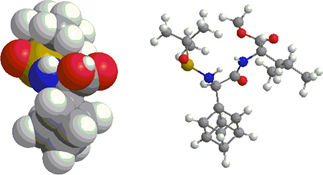
The preparation of the first amino acid derivative bearing an unfunctionalised cubane substituent and the first dipeptide bearing a cubane substituent is described.



